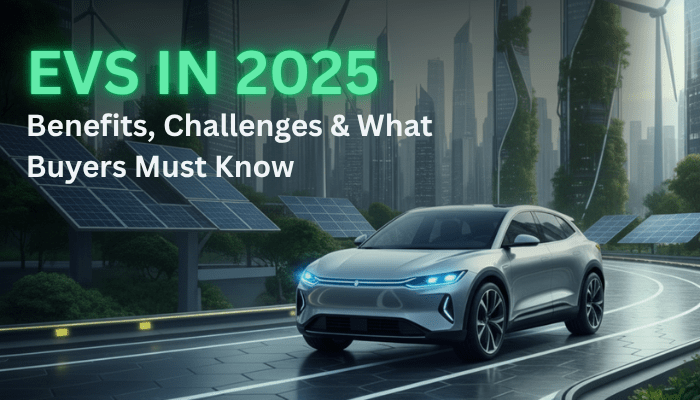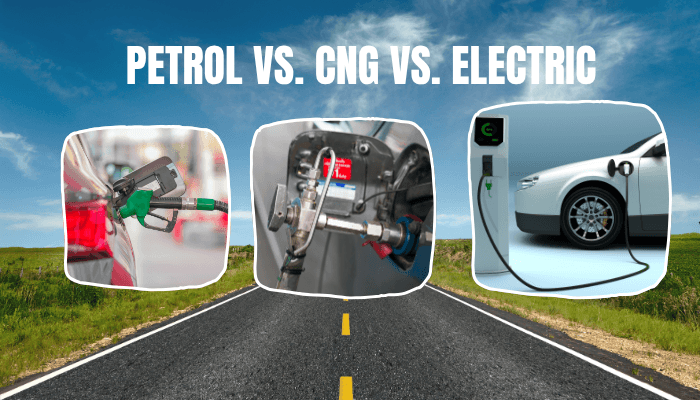The year 2025 feels different on the road. Cars are quieter. Fewer fumes fill the air. Electric vehicles, or EVs, are a real change in how people travel. Millions are on the road now. That shift is not only about parts and power. It is about cleaner air, lower running costs, and a new way to think about moving from place to place.
Growth of the EV Market

EV sales rose fast in early 2025. More than four million new electric cars were sold in the first three months alone. That is a sharp jump from last year. Nearly one in four new cars today is electric. Markets in Southeast Asia, Latin America, and Africa are adopting EVs. India is increasing production to meet demand in cities and smaller towns. Used EV markets are growing too, making electric cars available to more people.
Key Benefits of Owning an EV
- Lower running cost: Charging usually costs less than filling a tank.
- Less maintenance: Fewer moving parts mean fewer visits to the workshop.
- Smooth drive: Instant power and quiet cabins make driving easy.
- Cleaner energy: Charging from renewable power reduces pollution.
- Better daily comfort: Many EVs offer easy controls and simple apps for charging.
Government Support and Incentives
Many governments offer support for EV buyers. This can be subsidies, tax breaks, or lower registration fees. Programs like FAME in India help build chargers and give direct help to buyers and fleet operators. Local cities may offer parking or other small benefits. These policies reduce the upfront price and speed up charger installation.
Advances in EV Battery Technology

- Solid-state batteries are being developed to be safer and lighter.
- Charging speeds improved so many cars can reach most of their charge in under 30 minutes.
- Battery management systems are smarter. They help safety and extend battery life.
- Battery recycling and second life use are growing to cut waste.
- Production costs and supply chain limits remain issues, but progress is steady.
Charging Infrastructure in 2025
Charging points are growing quickly. In India, public chargers rose from about 1,800 in 2022 to over 16,000 in 2024. Fast chargers and smart monitoring systems reduce wait times. Apps now show charger status and guide drivers. Home charging stays the most convenient option for many owners. Remote areas still need more chargers and grid upgrades in some places.
Cost of Buying and Maintaining EVs
Buying an EV often costs more at first, but total costs can be lower over time. For many buyers the first sticker price feels high. But electric running costs are lower. Yearly spending on fuel and common repairs is smaller. Battery warranties and longer life reduce risk. Owners report fewer visits to service shops for engine issues. Insurance can vary, and resale values are still finding a balance as the market matures.
- Upfront price: Typically higher than a petrol car.
- Running costs: Electricity and simple maintenance make yearly costs much lower.
- Maintenance: Mostly tyres, brakes, and basic checks. Fewer breakdowns overall.
- Battery life: Most batteries last ten years or more. Recycling and reuse programs are improving.
Common Challenges Faced by EV Owners
- Limited chargers in small towns and remote areas.
- Home charging requires space and sometimes extra wiring.
- Battery aging reduces range over time, though newer tech improves life.
- Extreme temperatures can lower driving range.
- Repairs beyond routine service can be costlier or harder to find.
Owners often adjust routines to match charging times and plan longer trips carefully. Local support and better service networks solve many of these issues over time.
Environmental Impact and Sustainability

EVs have no tailpipe emissions. That helps improve air quality in cities. Over a car’s life, EVs usually produce far less carbon dioxide per mile than petrol cars. While making batteries creates more emissions in production, this is often offset within a year or two of driving. As grids add more wind or solar power, the climate benefit of EVs grows. Recycling and second life use for batteries help reduce waste.
What Buyers Should Check Before Purchase
- Driving range: Make sure the car covers your regular trips.
- Charging access: Check home, work, and public charging near you.
- Battery warranty: Understand terms and what is covered.
- Long term cost: Compare costs over five to ten years, including fuel, service, and insurance.
- Incentives: See if local rebates or tax breaks apply.
- Service network: Confirm that repairs and maintenance are available where you live.
Take time to test the charging routine you will use to avoid surprises after purchase.
Future Outlook of EVs Beyond 2025
EVs will continue to spread as batteries become cheaper and charging gets faster. More car models will be available for different needs. Renewable energy and smarter grids will work with EVs to cut emissions further. Over time, EVs will reach more places and serve more people. The shift will change fuel demand and how cities plan transport.
Conclusion
EVs in 2025 are a clear step toward cleaner transport. They lower running costs, reduce local pollution, and offer new features for daily travel. Challenges remain in charger coverage, initial price, and battery care. Still, with better batteries, more chargers, and supportive rules, EV ownership is becoming easier and more sensible for many people. The move to electric cars is now a real part of how people live and travel.
For more tips and updates on cars and EVs, follow My Car Wisdom and stay informed before your next drive.
Raja Yadav, the content writer at My Car Wisdom, brings a unique voice and style to our blog. With a knack for storytelling and a keen eye for detail, Raja ensures that every piece of content is informative, engaging, and easy to understand. His focus is on delivering high-quality articles that cater to both novice car owners and seasoned automotive enthusiasts.




